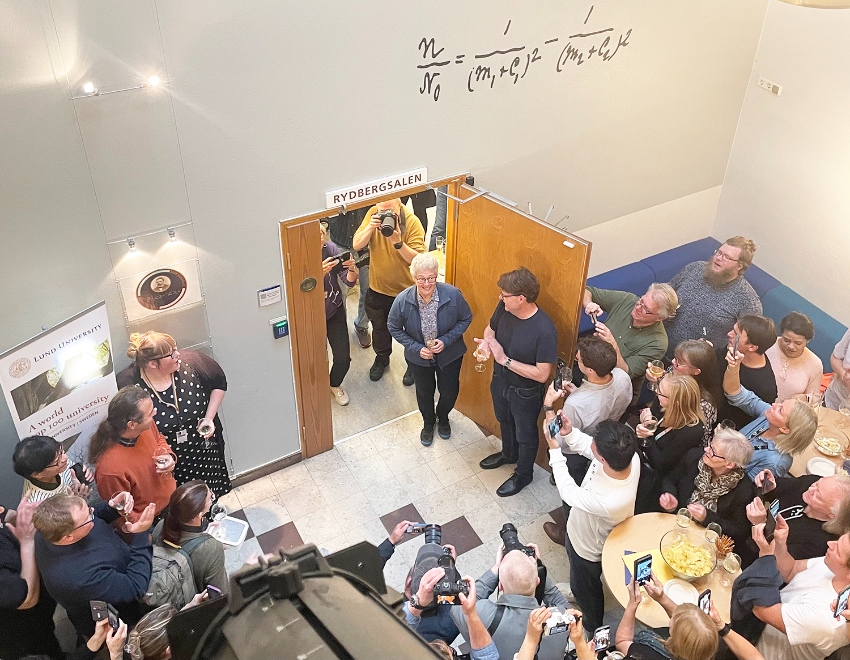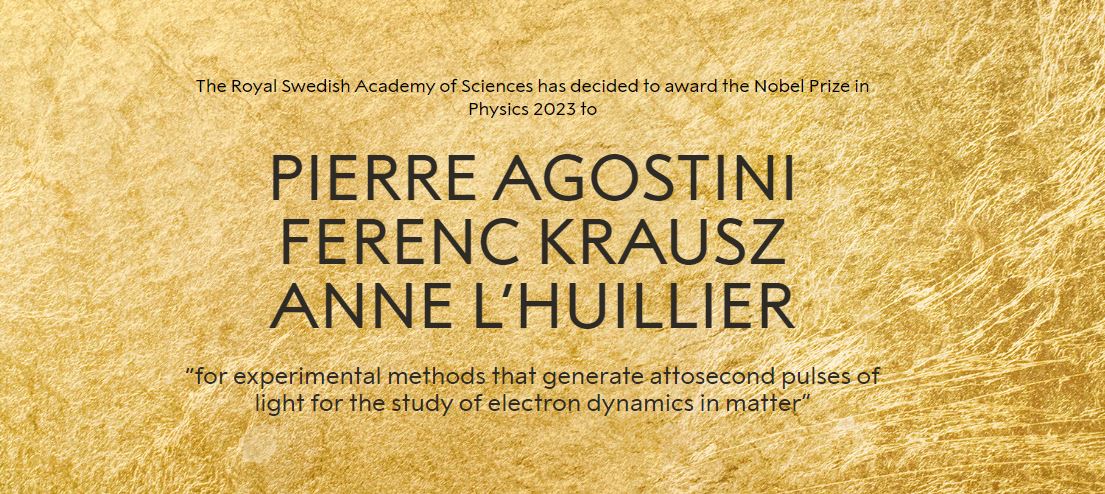”Now, not even the Nobel Prize remains!”
DEAN'S BLOG. Not many days will be like Tuesday 3 October. We now share the joy of Anne L’Huillier, Professor of Atomic Physics at LTH, being awarded the 2023 Nobel Prize in Physics. Let me get back to you about how we will celebrate this great occasion, students and staff, together with Anne.
– Published 4 October 2023

“What will be your next step?”, asked one of the journalists during yesterday’s press conference held in Rydbergsalen at Fysicum. This was just a few hours after Anne L’Huillier got the call from the Royal Swedish Academy of Sciences. And then, in front of the crowd of students who seemed to sense what was going on, she continued teaching.
“The next step is to stay where I am, regardless of what happened today. That is my goal, to continue researching and teaching just as I do today”, Anne L’Huillier replied.
Anne L’Huillier’s passion for teaching and research, to solve the mysteries of atomic physics and electrons is undeniable. It is difficult to express how proud and happy we are that Anne L’Huillier, after years of being “the favourite bet”, is now the well-deserved receiver of the Nobel Prize in Physics.
Anne L’Huillier is a world-leading researcher with a strong commitment to our students. With her humility, curiosity and desire to understand and improve, she is a role model for students, PhD students, researchers and staff.
During the press conference yesterday, she advised young or aspiring scientists also driven by the will to understand and improve, to stick to their intuition and not to give up until something unknown is explained. ”Go for it!”, she said.
As Dean of LTH, I want to emphasise the importance of excellent research environments where we have long-term funding and advanced infrastructure for experimental research. This is how we create opportunities for pioneering research breakthroughs and continued curious and dedicated research. These environments provide the conditions to explore, make mistakes, redo and test new things – on a journey that is both long and winding before the really big breakthroughs occur.
Examples of research infrastructure at the global forefront are of course MAX IV and ESS in Lund, and also the planned new nanolab – Nanolab Science Village – which has received important external funding and will lay the foundation for a thriving Science Village, as part of LTH and Lund University.
For Anne L’Huillier, the Lund High-Power Laser Facility at Lund Laser Centre (LLC) has been her firm base. There, at Fysicum, a new and advanced laser lab is currently being built that will provide even better opportunities to study the movement of electrons. Anne is also important to the environment through the way she involves her PhD students and researchers in the research team – this is how successful environments are built.
Anne L’Huillier is Lund University’s most awarded researcher. She has received the Wolf Prize – commonly known as “the little Nobel Prize in Physics”. When she was recently awarded Lund University’s gold medal, Vice-Chancellor Erik Renström said that it is only the Nobel Prize that remains for her.
And now, not even that remains!
Anne L’Huillier is the fifth woman to win the Nobel Prize in Physics, Marie Curie being the first, followed by Maria Goeppert-Mayer, Donna Strickland and Andrea M Ghez.
Student, teacher or employee – it might be difficult to think about anything other than the Nobel Prize these days, something we will surely never forget. But I guess we will now have to keep on working, in the spirit of Anne L’Huillier and her fantastic, well-deserved Prize:
With curiousity, persistence, intuition and humility, and the will to understand and improve.
Annika Olsson
Dean of LTH
Three Nobel laureates in physics 2023
This year’s Nobel laureates in physics – Pierre Agostini, Ferenc Krausz and Anne L’Huillier – have demonstrated a way to create extremely short pulses of light that can be used to measure the rapid processes in which electrons move or change energy.

